An Attractive, Drought-Tolerant Hedge for Southwestern Gardens: Hop Bush
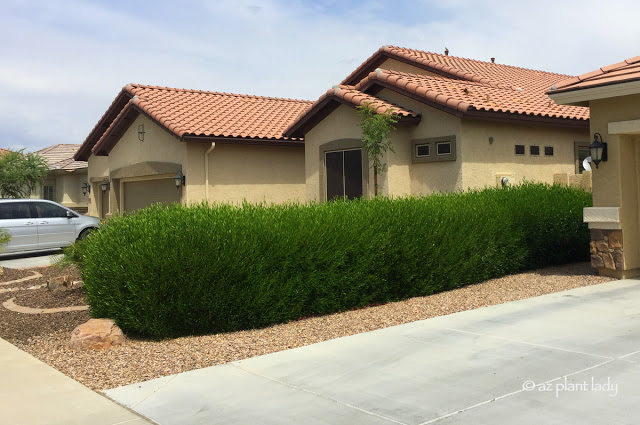
Beautiful Hop Bush Shrub (Dodonaea viscosa)
I am always on the lookout for great examples of plants in the desert landscape. In my work as a landscape consultant, I drive through countless neighborhoods, which allows me to see lots of ideas.
A few years ago, I drove by a house that had a beautiful Hop Bush shrub (Dodonaea viscosa).
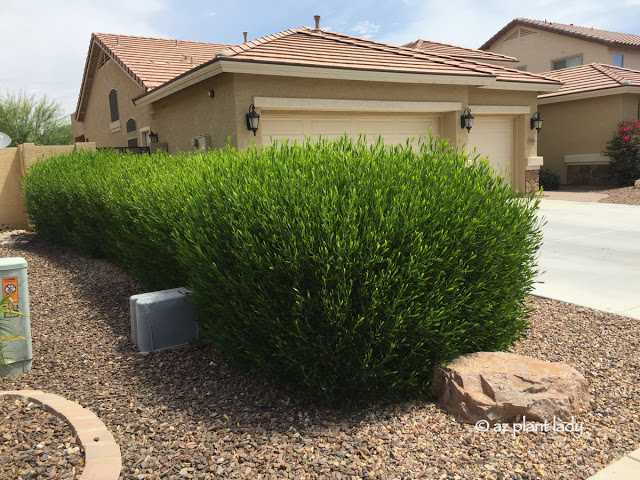
This evergreen, drought-tolerant shrub does wonderfully in our southwestern climate, and it is a frequent addition to landscapes I design.
It’s versatility is one of the reasons it is near the top of my favorite shrub list.
- Hop Bush is a great substitute for Oleander shrubs.
- They can grow up to 12 feet tall or be maintained at a shorter height – basically you can decide how large it gets.
- Their height makes them a great choice to screen out an unattractive view in spaces where a tree won’t fit while providing shade for for windows.
- Hop Bush can be allowed to grow into their natural shape or pruned more formally.
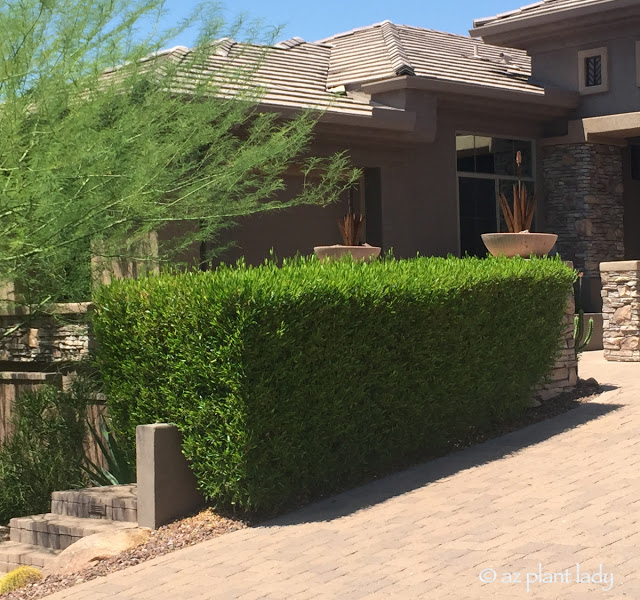
Native to the Southwest, Hop Bush is quite versatile and relatively fuss-free, especially if maintained by pruning every 6 months or so, as shown above. Here is another example of a hop bush shrub that has been pruned more formally, which it handles well.
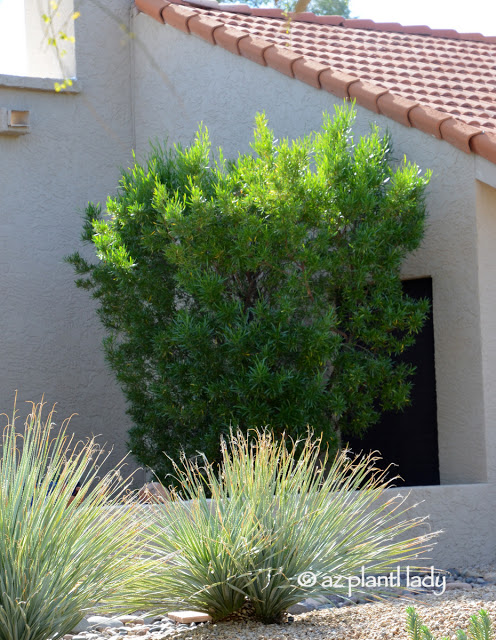
Of course, you can always let it grow into its more natural form as a large shrub.
For more information on hop bush including what its flowers look like and why it’s becoming a popular substitute for oleanders, you can read my earlier blog post – “Drought Tolerant and Beautiful: Hopbush the Alternative to Oleanders.”

 Noelle Johnson, aka, 'AZ Plant Lady' is a author, horticulturist, and landscape consultant who helps people learn how to create, grow, and maintain beautiful desert gardens that thrive in a hot, dry climate. She does this through her consulting services, her online class Desert Gardening 101, and her monthly membership club, Through the Garden Gate. As she likes to tell desert-dwellers, "Gardening in the desert isn't hard, but it is different."
Noelle Johnson, aka, 'AZ Plant Lady' is a author, horticulturist, and landscape consultant who helps people learn how to create, grow, and maintain beautiful desert gardens that thrive in a hot, dry climate. She does this through her consulting services, her online class Desert Gardening 101, and her monthly membership club, Through the Garden Gate. As she likes to tell desert-dwellers, "Gardening in the desert isn't hard, but it is different."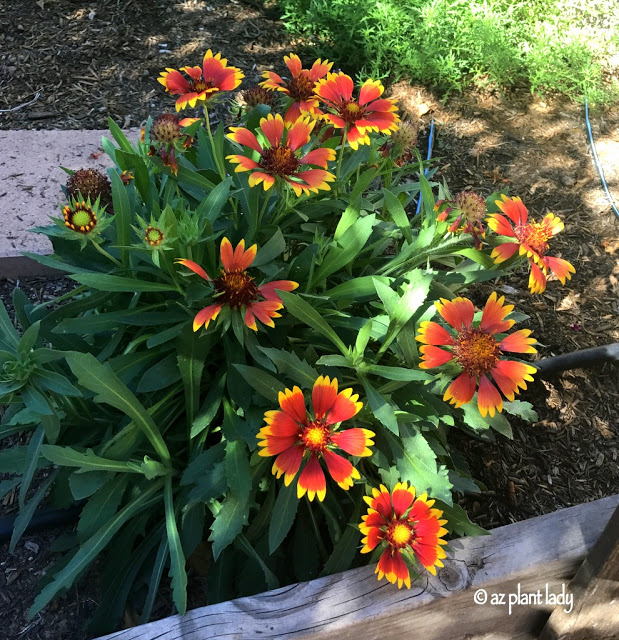
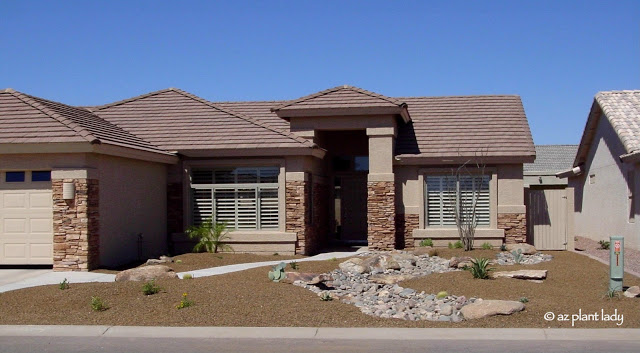
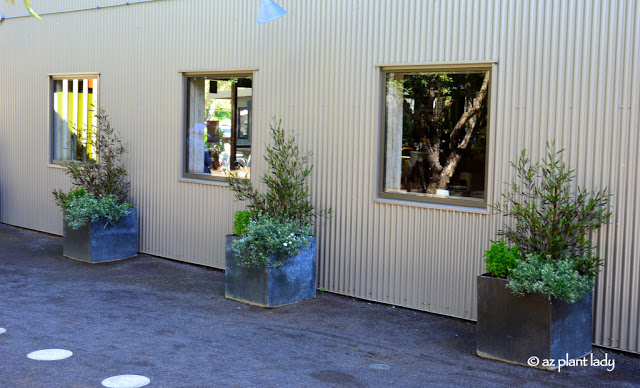
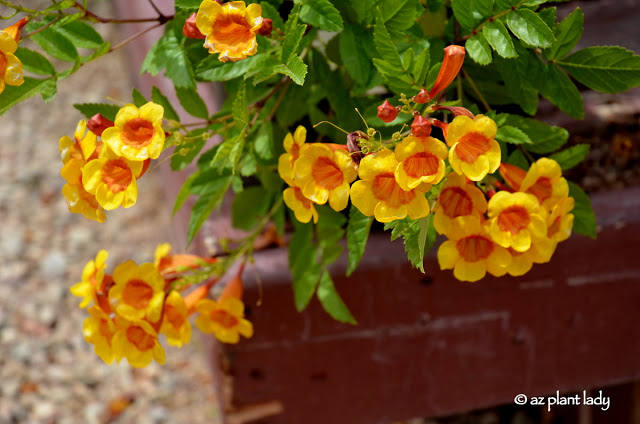
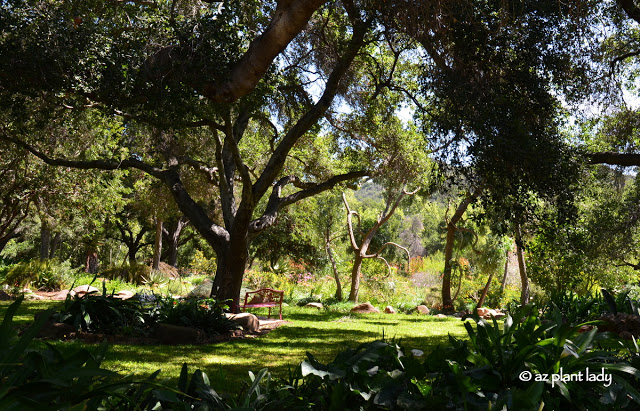
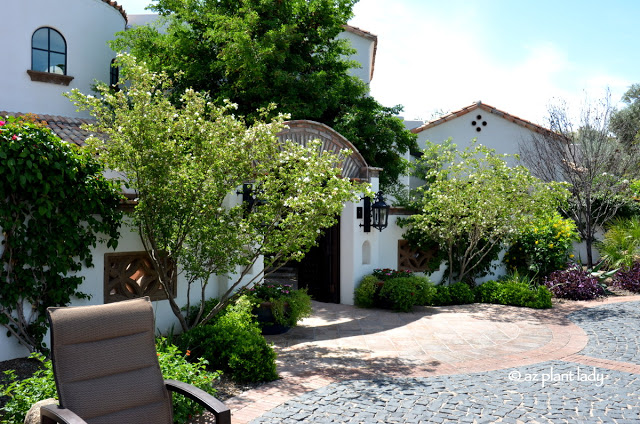










We planted them along a fence line to attract the flies from our next door neighbors horsbes. They are slow growing. I had hoped they would already look like your 3rd picture. They seem like they have only grown a foot since planting last spring.
I'm moving from a very plant lush area in coastal Southern CA to the High Desert area. I started my research today for any plants, in addition to just succulents to successfully grow in my new space. I saved the pictures and names of every plant you've shown. You've given me cause for hope that I'll be able to create a colorful sanctuary 🙂 Thank you!
Hi Sherrie,
Welcome to desert gardening! As you can see, there are quite a few lush green, desert plants that thrive in our arid climate.
Best,
Noelle – AZ Plant Lady
Hi Sherrie,
I also moved from a “very plant lush area”, my zipcode is/was 92625, but I’m in the Low Desert. I know it’s hard to believe but if you plant smaller plants, they will acclimate better, and therefore, grow faster. We planted two Dodonaea, in the Spring, but the drippers (only one for each) were slightly off (rolled downhill away from the plants).
Fortunately we realized this before the Summer heat and replaced them (original ones croaked.) So… new ones were fine, two drippers per plant, extra gravel mulch, and just to make certain? Shade cloth, just for this year. Now that Fall is here, They look great.
Good luck, Az Plant Lady is the best!
S.
Oh yes, my favorite saying, “The first year they sleep, second year they creep, third they leap.” (Regarding perennials, bushes, etc.) so, Fall is best planting time, in my POV. Check with Az Plant Lady 😉